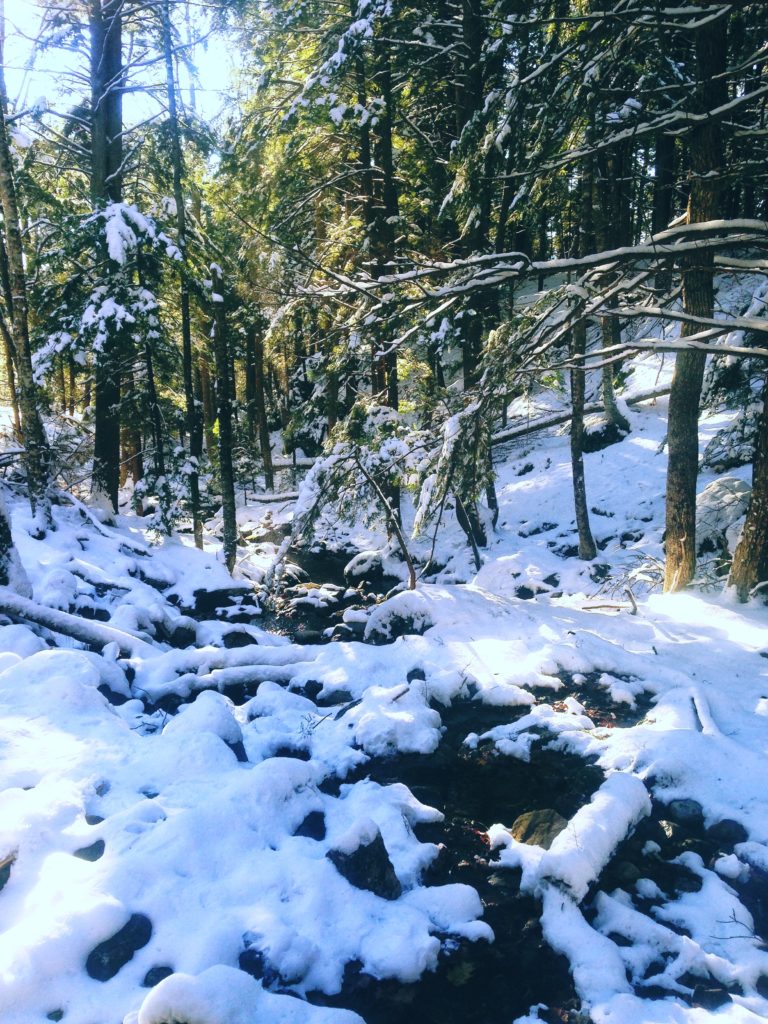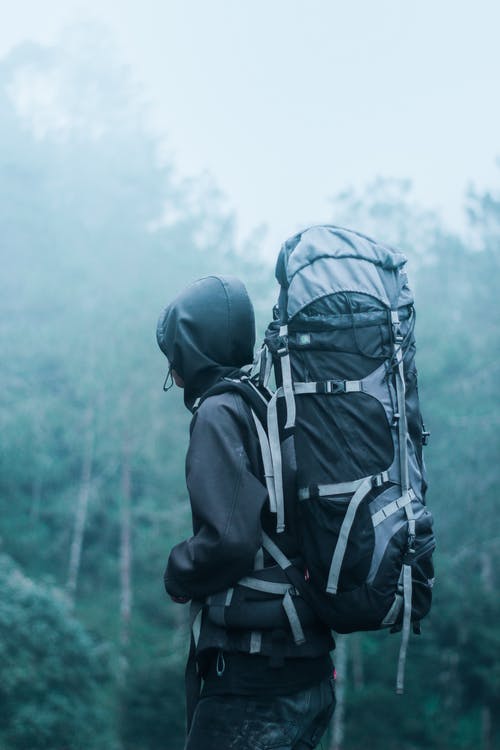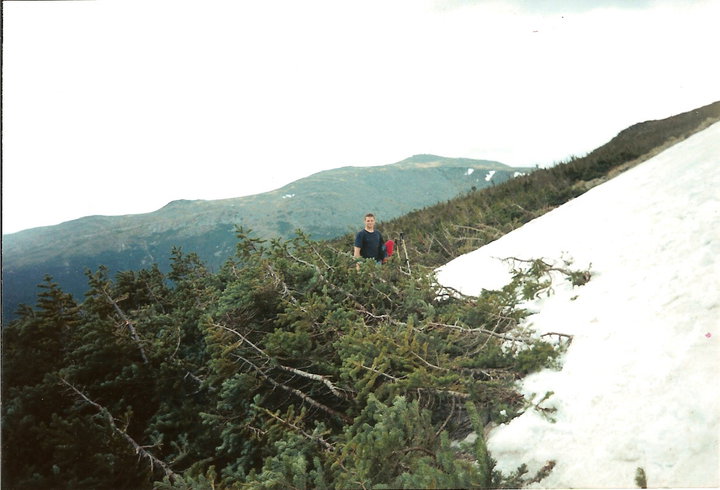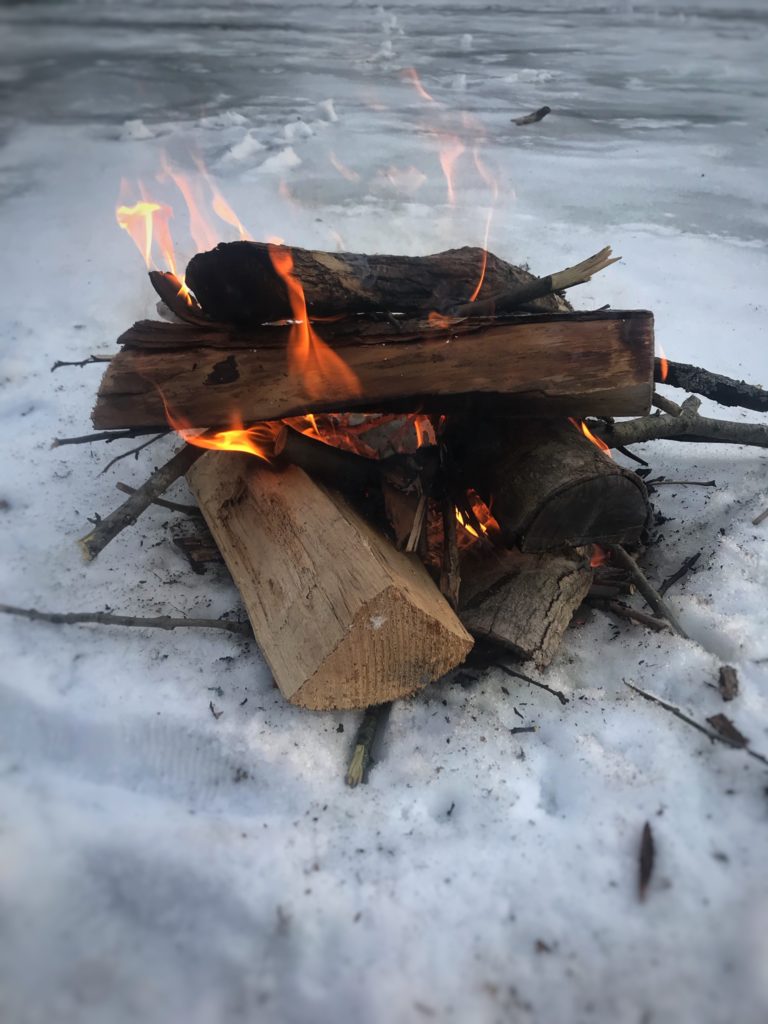The Presidential Range in New Hampshire offers some of the best hiking in New England. It also has a reputation for unpredictable weather, so pack well and be prepared for anything.

At 21 years old, I spent all of my free time hiking and climbing. Much of it with John Crowley. It wasn’t strange for us to drive hours into the wilderness in the middle of the night to spend a weekend backpacking, or even to just grab a day summiting whatever peaks we could make it to. There was nothing that we didn’t feel we could conquer through grit and determination. This is how we found ourselves pulling into a dark dirt parking lot at 2am on a Friday night in December. Out of work at 7, and after 4 hours on the road, we started up the trail into New Hampshire’s Presidential Mountains.
Weather in the Presidentials
Now, Wikipedia describes this particular patch of wilderness as such, “The Presidential Range is notorious for having some of the worst weather on Earth, mainly because of the unpredictability of high wind speeds and whiteout conditions on the higher summits. Because of the poor weather conditions, the Presidential Range is often used for mountaineering training for those who go on to climb some of the world’s highest mountains, including K2 and Everest.” So clearly, this was the perfect place for winter backpacking.

Our friend Steve had been up this trail a week earlier. He reported 24-36″ of snow, and figured two summits was reasonable for the weekend. Shouldering our packs, we started forward, mostly bare dirt and snow crust on the side of the trail. Snowshoes were tossed back into the car, and reveling in the near 40 degree weather. What we did not do, was stop to consider where the snow might be.
What Mountains Make up the Presidential Range?
The Presidential Mountains are mostly named after US Presidents, the most notable and largest being Mount Washington. Washington has a road up to the top, and a railroad spur. It is regularly hiked during the summer and has a wide variety of trails for all levels of experience. This particular Presidential Range hiking adventure brought us to Mount Madison and Adams (at least that was our hope). They are somewhat less frequented, and while still the home of erratic winter weather, not quite as extreme as Washington in that regard. Any winter hike on Mount Washington should be undertaken with extreme caution as deadly mishaps are not uncommon. This particular hiking plan was to complete the first part of the “Presidential Traverse” in winter. The complete traverse covers roughly 23 miles, and would need a week dedicated to it during the winter.
Where are the Presidential Mountains?
The Presidential Mountains are a prime hiking destination located in New Hampshire near the Maine border. The most notable town in the area is North Conway, which serves as a resort hub for much of the hiking, camping and skiing in the area. Generally we would make stops there after a trip into the woods to replace any gear that failed, or look for something better while we had the flaws of our current equipment clear in mind.

Hiking by Headlamp
There is an eerie darkness on a cold winters night, the world restricted to the circular glow of a headlamp, wet muddy earth absorbing the light rather than reflecting it. Animal sounds were minimal, and wind in bare branches kept up a distant rattle. We had been hiking less than an hour into the Presidential Range when we came to the first stream. There was some confusion, as it did not appear on the map. Had we wandered off on a side trail? Stepping over the narrow waterway, we were soon comforted by blazes on the trees, and knew that we were going the right way. We crossed several more of these small unmarked streams without much consideration. As 3 became 4 and our headlamps slowly dimmed, the long day seemed to slowly overtake us. Our first sense of something being out of the ordinary came when We reached the first marked stream on the map. It’s banks were invisible, buried under a torrent of cold water. We had found the snow. Some careful steps and well positioned rocks helped us across with wet feet, but in good shape. Only about a mile to go, and one more marked stream to our campsite.
At least, it was marked as a stream. What we eventually came upon was over 50′ wide, and roaring along at a good clip. Almost there. We shook our heads and proceeded with the dogged determination reserved for those suffering sleep deprivation and overexertion. There was no attempt to find a way around. This was the path. We could see it on the other side. This is where we would cross.
Wading into the frozen Darkness
The water was quickly over our boots. Then our knees. All feeling in our legs was quickly lost as water, only a degree or two removed from snow, cascaded around our legs. It was impossible to feel what was underfoot, and we stumbled across in jerky motions, our feet catching on hidden rocks and snags. And then John went over. A slow motion, arms pinwheeling for balance topple. He didn’t submerge, but sunk to his shoulders, and his pack, floating on the water started to carry him downstream. I am not sure how I reached him, but I managed to grab ahold and stop him long enough for him to find his frozen feet and maneuver them underneath his body. From there we managed to lurch to the other side, sodden, our hiking clothes stiffening in the December air blowing down through the Presidential range.
Further hiking was no longer possible. At the next small clearing we came upon we dropped our packs to the ground and took stock of our situation. The tent. It was hanging from the bottom of John’s pack. The bag already glistening with ice forming over its sodden surface. With numb fingers we managed to slide stiff icy poles through sleeves half frozen shut. It was a miracle that we tore nothing, and none of the poles snapped. Once up, we gave it a few shakes to loosen the thin sheets of ice clinging to it. Climbing into the tent did nothing to warm us initially, but we were out of the wind. Stripping off my wet, half frozen clothes, I crawled into my sleeping bag. Body shivering to create heat, and hopefully retain it between layers of down and polypropylene. John was incredibly lucky. The compression sack his sleeping bag was in had only allowed a small amount of water through, wetting the surface, but no penetrating to inside his sleeping bag. The cold did not keep us awake long, and we were asleep as the first rays of light came over the horizon.
A day by the fire

Once dragging ourselves from our sleeping bags our first priority was to build a fire. We found a flat rocky spot, and dragging all the loose dry wood we could find to it, built a considerable blaze. Boots sodden and frozen, there was no attempt to hike that day, instead sticking close to our camp padding around in spare socks. (The value of packing socks in several layers of plastic bags can not be over exaggerated.) As day quickly turned to dusk, we were treated to the sound of bull moose in the distance, crashing into each other, bellowing and snorting. Sunlight in the Presidential region being scarce in the winter, we decided to pack up and head for the car with daylight on Sunday, rather than try hiking later and find our way stumbling through dark waterways again. While a hike out in the dark had originally seemed reasonable, we were less enthusiastic about it now. Our hike out was long if uneventful. We pushed ourselves through the underbrush, scouring the banks of the larger streams for ways across that did not require deep wading, and then back the other side to the trail. We reached the car with the sun still in the sky, having abandoned the entirety of our summit goals for the weekend, ran out of gas on the highway, and managed to coast into a service station in northern Massachusetts. There, we were reminded that you couldn’t buy beer on Sundays, so we bought a cake, which we ate in the parking lot.
If you enjoyed these travel and camping tips, the story about hiking in the Presidential Range, or any other post on Real Life with Dad, be sure to follow us on FaceBook, Twitter and Instagram @RealLifeWithDad for our next adventure!
If you’re looking for a slightly less intense adventure, check out this post on Car Camping or this one on how to get a free National Parks Pass!